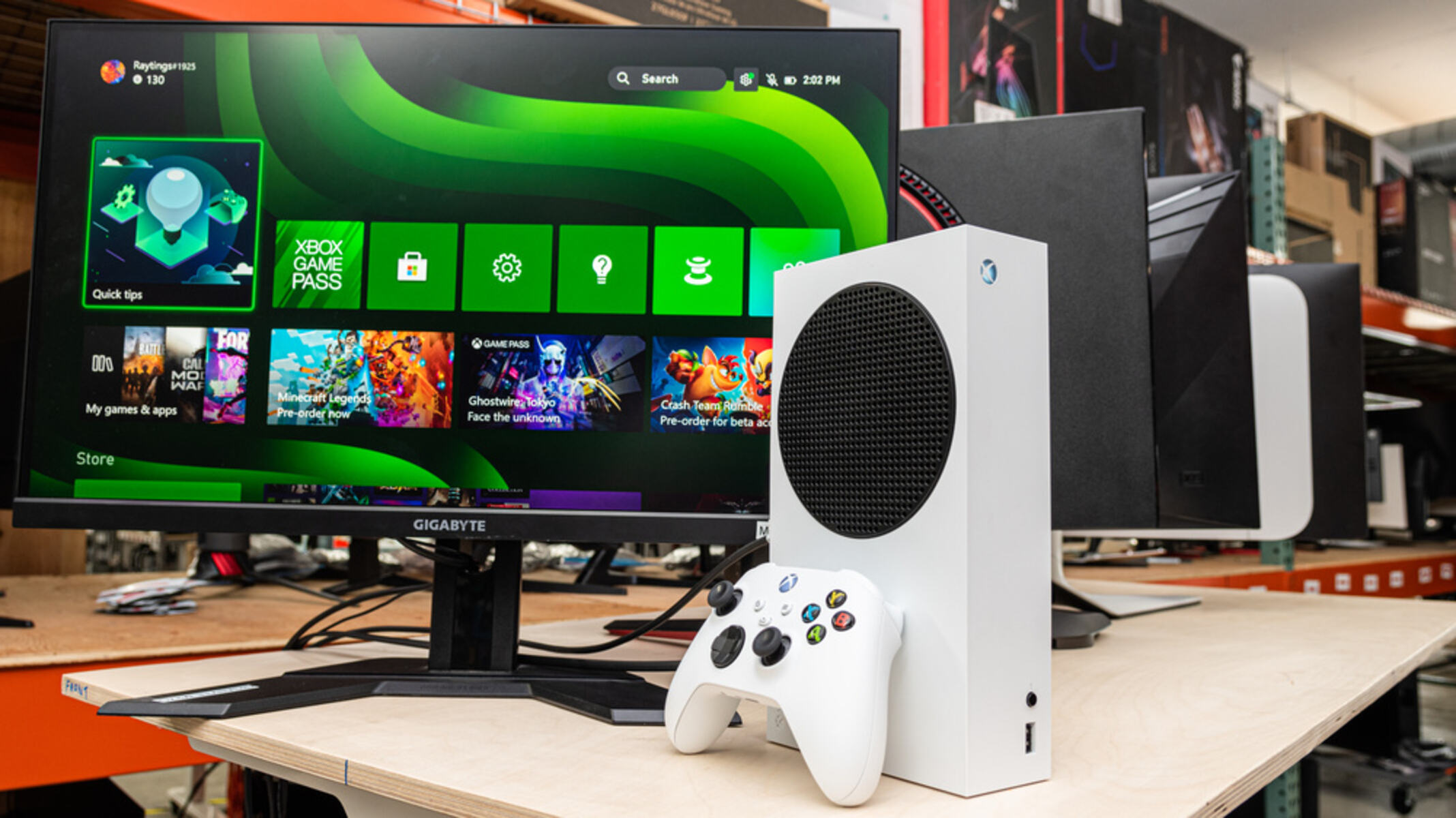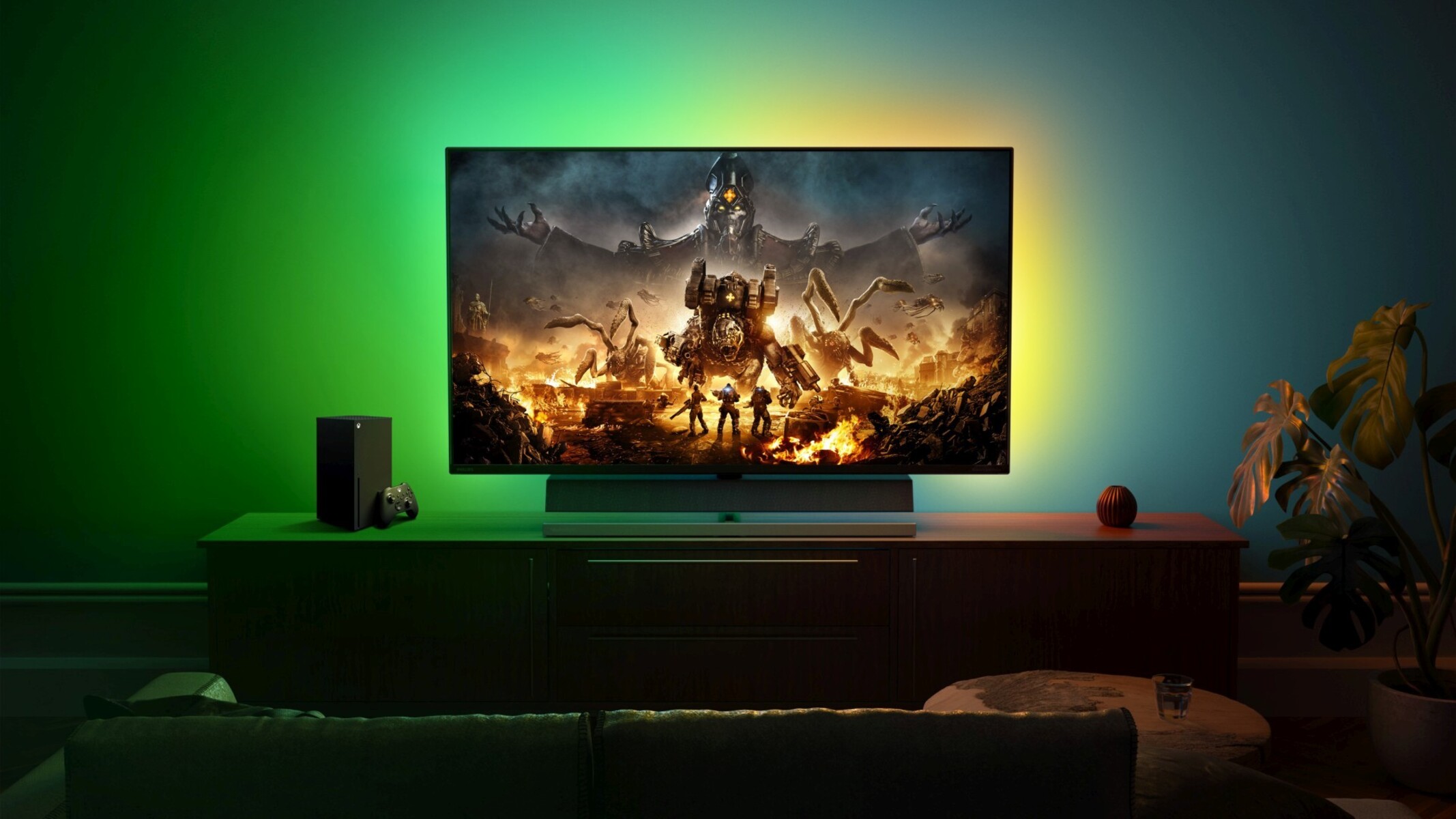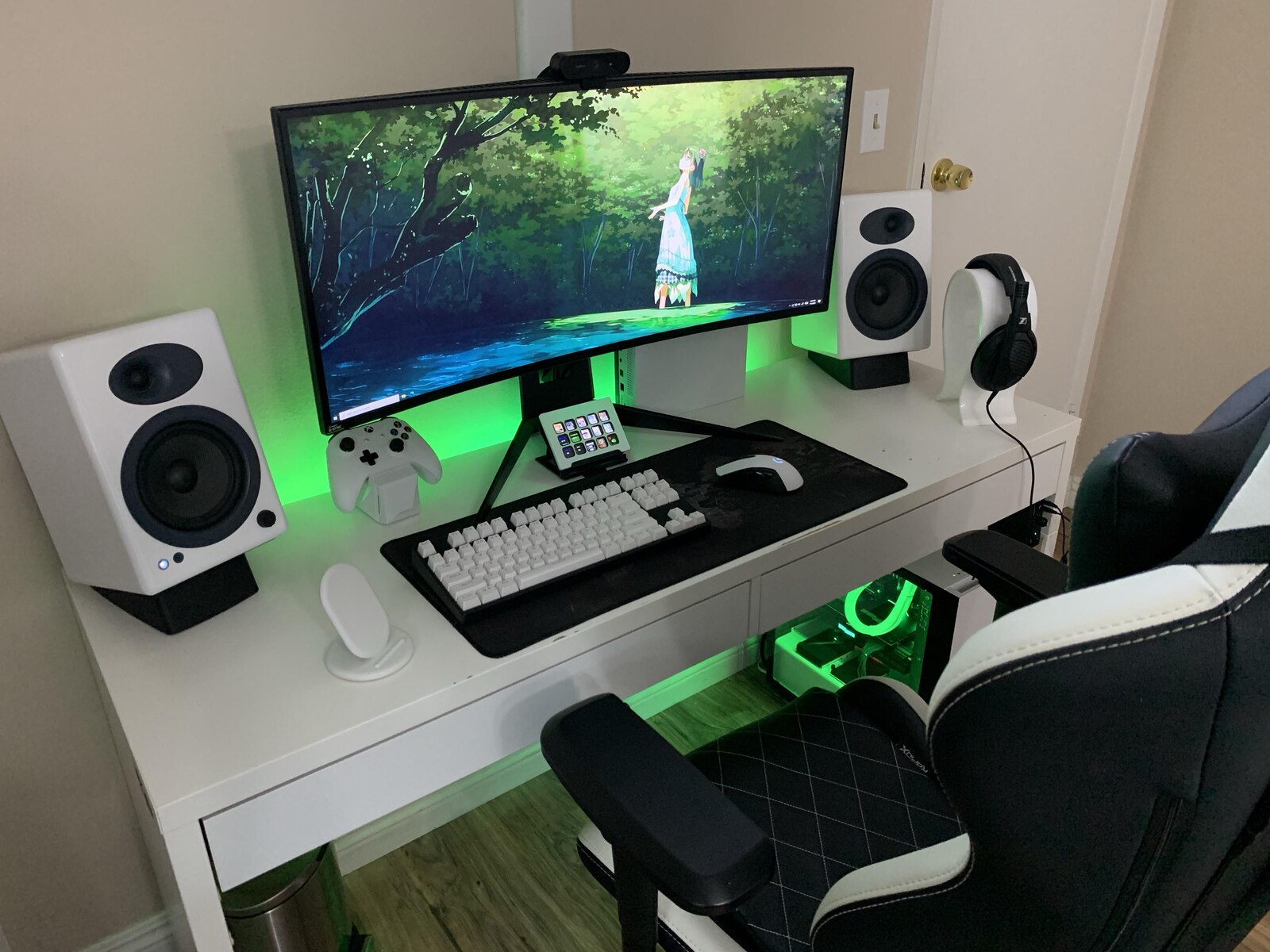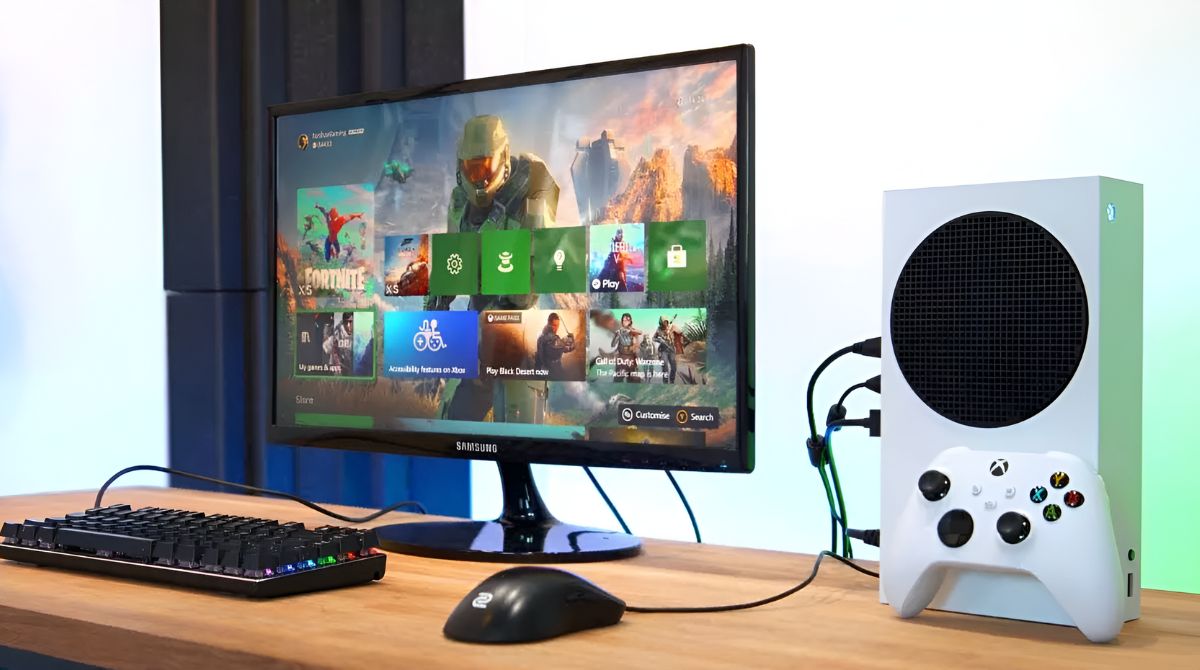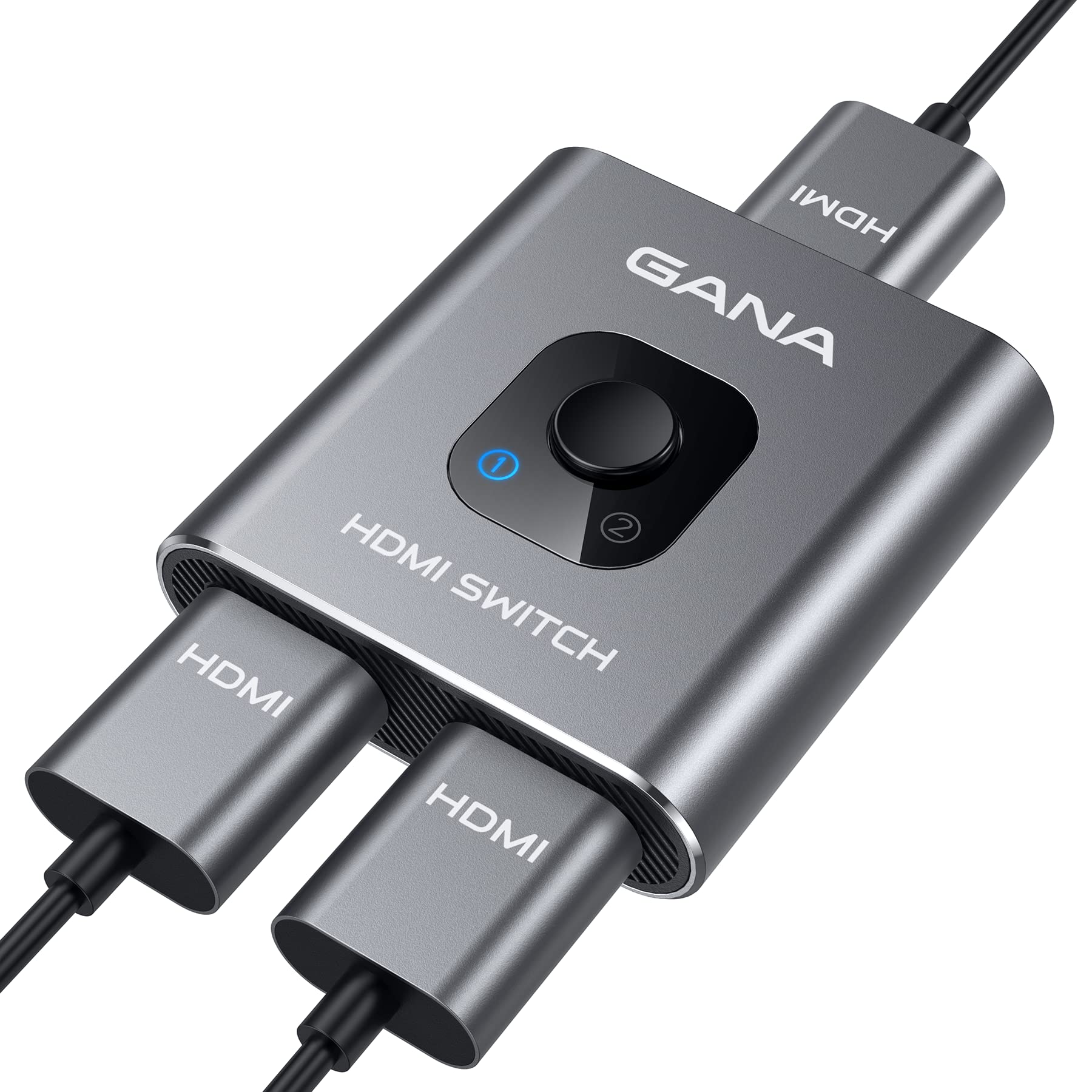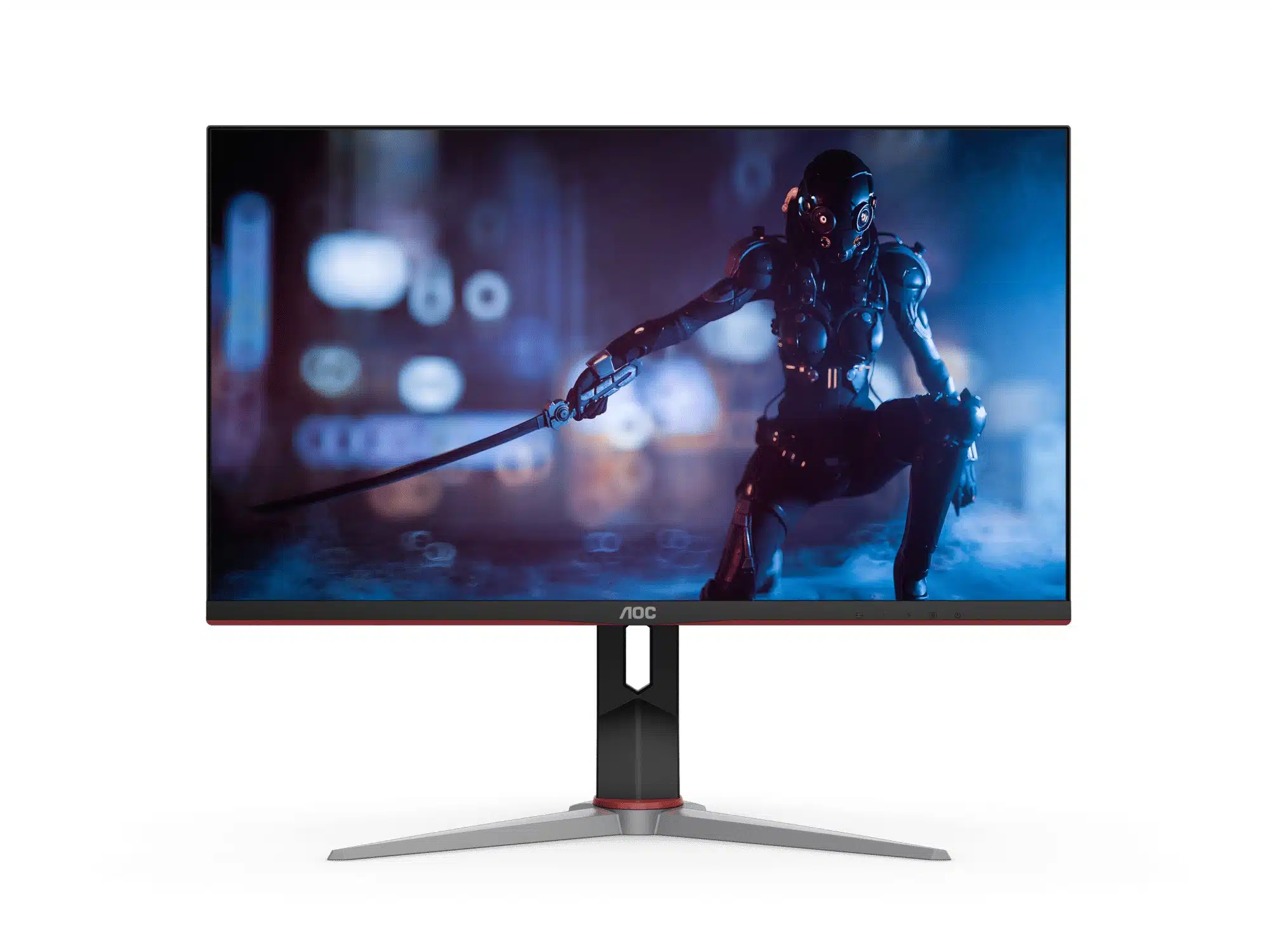What is Hz and why is it important for gaming?
When it comes to gaming, the term “Hz” refers to the refresh rate of a monitor, measured in hertz. It denotes how many times the screen can refresh the image per second. The higher the refresh rate, the smoother and more fluid the gameplay will appear.
Why is this important for gaming? Well, during fast-paced action sequences, such as shooting games or racing games, a higher refresh rate can make a significant difference. It allows for more fluid animations, reduces motion blur, and provides a more immersive experience. Essentially, a higher refresh rate enables the monitor to keep up with the rapid movements and transitions happening on-screen, resulting in a more responsive and seamless gameplay experience.
For certain genres of games, such as competitive first-person shooters or fighting games, where reaction time is crucial, having a higher refresh rate can give players a competitive edge. This is because a monitor with a higher refresh rate will display new frames more frequently, allowing players to see and respond to the action quicker than their opponents who are using lower refresh rate monitors.
It’s important to note that the benefits of a higher refresh rate are most noticeable when the game is running at a frame rate that matches or exceeds the monitor’s refresh rate. For example, if you have a monitor with a 144Hz refresh rate, but your game is only running at 60 frames per second, you will not fully utilize the monitor’s capabilities.
Overall, a higher refresh rate, measured in Hz, is important for gaming because it enhances the visual experience, reduces motion blur, and provides a smoother gameplay experience. It can particularly benefit gamers who play fast-paced, action-oriented games or those who participate in competitive gaming where reaction time is crucial.
Understanding the performance requirements of Xbox One
When it comes to gaming on an Xbox One, it’s important to understand the performance requirements in order to optimize your gaming experience. The Xbox One console is capable of delivering high-quality graphics and smooth gameplay, but to fully utilize its capabilities, you need to ensure that your gaming monitor meets certain specifications.
First and foremost, the Xbox One supports a maximum resolution of 1080p, also known as Full HD. Therefore, it is essential that your gaming monitor can display this resolution to fully enjoy the visual fidelity that the console is capable of delivering. Monitors with a resolution lower than 1080p may result in a noticeable drop in image quality and detail.
In addition to resolution, another crucial aspect to consider is the compatibility of the monitor with the Xbox One’s refresh rate. The Xbox One typically operates at a default refresh rate of 60Hz. This means that the ideal monitor for Xbox One gaming would have a refresh rate of 60Hz to ensure a seamless and smooth gaming experience.
However, some gaming enthusiasts may prefer to invest in monitors with higher refresh rates, such as 120Hz or even 144Hz. While these higher refresh rates can deliver smoother visuals, it’s important to note that the Xbox One may not be capable of reaching frame rates that exceed 60 frames per second (fps) in most games. Therefore, the benefits of a higher refresh rate may not be fully realized unless you also plan on using the monitor for other gaming platforms or if you have specific games that support higher frame rates on the Xbox One.
When it comes to response time, the Xbox One demands a monitor with a low response time to ensure minimal input lag. Input lag refers to the delay between your actions on the controller and the corresponding actions displayed on the screen. For optimal gaming, it is recommended to look for a monitor with a response time of 5ms or lower to ensure a smooth and responsive gaming experience.
Lastly, connectivity options are essential for an Xbox One gaming monitor. The console supports HDMI output, so ensure that your monitor has an HDMI input port to easily connect to the Xbox One.
Overall, understanding the performance requirements of Xbox One gaming involves considering factors such as resolution, refresh rate, response time, and connectivity options. By choosing a monitor that meets these specifications, you can unlock the full potential of your Xbox One and enhance your gaming experience.
Choosing the right monitor for Xbox One gaming
When it comes to choosing a monitor for Xbox One gaming, there are a few key factors to consider in order to ensure an optimal gaming experience. Here are some important aspects to keep in mind:
Resolution: The Xbox One supports a maximum resolution of 1080p, so it’s recommended to choose a monitor that can display this resolution. While higher resolutions like 1440p or 4K are available, they may not be fully utilized by the Xbox One.
Refresh rate: The default refresh rate of the Xbox One is 60Hz. While higher refresh rates like 120Hz or 144Hz can provide smoother visuals, the benefit may not be fully realized unless you plan on using the monitor for other gaming platforms or if specific games support higher frame rates on the Xbox One.
Response time: Look for a monitor with a low response time, preferably 5ms or lower, to ensure minimal input lag. This will result in a more responsive gaming experience, allowing you to react quickly to in-game actions.
Display size: Consider the size of the monitor that suits your gaming setup and preferences. Larger monitors offer a more immersive experience, but keep in mind that sitting too close to a large screen may cause eye strain. It’s important to find the right balance for your gaming environment.
Connectivity options: Ensure that the monitor has an HDMI input port to easily connect to the Xbox One. Additionally, it’s beneficial to have other connectivity options like DisplayPort or DVI for future compatibility with other devices.
Additional features: Some monitors offer extra features such as adjustable stands, built-in speakers, or support for HDR (High Dynamic Range) content. Consider these features based on your personal preferences and gaming needs.
It is also worth noting that budget plays a significant role in choosing the right monitor. While there are high-end gaming monitors with advanced features, there are also more affordable options that can still provide a satisfactory gaming experience. Assess your gaming needs, prioritize the necessary features, and find a monitor that fits within your budget.
Ultimately, choosing the right monitor for Xbox One gaming involves finding a balance between resolution, refresh rate, response time, display size, connectivity options, additional features, and budget. By considering these factors, you can select a monitor that allows you to fully enjoy your Xbox One games with optimal visuals and performance.
The recommended Hz for Xbox One gaming
When it comes to the recommended refresh rate (Hz) for Xbox One gaming, the default refresh rate of the console is 60Hz. This means that most Xbox One games are designed to run at a frame rate of 60 frames per second (fps), making a 60Hz monitor the ideal choice for a smooth gaming experience.
While there are monitors available with higher refresh rates, such as 120Hz or even 144Hz, it’s important to note that the Xbox One may not be capable of consistently reaching frame rates that exceed 60fps in most games. This is because game developers typically optimize their titles to run at 60fps on the console.
Choosing a monitor with a higher refresh rate can still have its benefits. It can provide smoother animations and reduced motion blur, especially in games that support higher frame rates or when using the monitor with other gaming platforms. However, it’s important to consider if the investment in a higher refresh rate monitor is worth it for Xbox One gaming alone.
Another factor to consider is that not all games on the Xbox One support higher frame rates. While some titles may offer performance modes or enhanced graphics for higher-end consoles like the Xbox One X, which can achieve higher frame rates, the majority of games are optimized for 60fps gameplay. Therefore, investing in a monitor with a refresh rate higher than 60Hz may not provide a significant advantage for most Xbox One gaming experiences.
Ultimately, the recommended Hz for Xbox One gaming is 60Hz. This refresh rate matches the frame rate of the majority of Xbox One games, ensuring a smooth and seamless gameplay experience. However, if you plan on using the monitor with other gaming platforms or games that support higher frame rates on the Xbox One, a higher refresh rate monitor may be worth considering for the added visual benefits it can provide.
It’s important to note that the recommended Hz for Xbox One gaming may vary depending on personal preferences and specific gaming situations. Some gamers prefer the smoother visuals that higher refresh rates can offer, while others may prioritize other aspects such as display size or resolution. Consider your gaming needs and preferences when making a decision on the Hz of your gaming monitor.
Potential drawbacks of higher Hz monitors for Xbox One
While higher refresh rate monitors, such as those with 120Hz or 144Hz, can offer some benefits for gaming, there are also potential drawbacks to consider when using them with an Xbox One console.
First and foremost, the Xbox One typically operates at a default refresh rate of 60Hz. This means that the console is designed to run games at a frame rate of 60 frames per second (fps). If you connect a higher refresh rate monitor to the Xbox One, it may not fully utilize the monitor’s capabilities. Most games will still run at 60fps, limiting the benefits of a higher refresh rate.
Another potential drawback is the increased cost associated with higher refresh rate monitors. Monitors with higher refresh rates tend to be more expensive compared to their 60Hz counterparts. If your primary gaming platform is the Xbox One and you don’t plan on using the monitor for other devices or games that can take advantage of the higher refresh rate, it may not be worth investing in a more expensive monitor.
Additionally, not all Xbox One games are optimized for higher frame rates. While some titles may offer enhanced performance modes or graphics options for higher-end consoles like the Xbox One X, the majority of games are designed to run at 60fps. This means that even if you have a higher refresh rate monitor, you may not see a significant difference in gameplay visuals compared to a standard 60Hz monitor.
Lastly, there can be compatibility issues when connecting a higher refresh rate monitor to the Xbox One. While most modern monitors support HDMI, which is the standard connection method for the Xbox One, there can be limitations regarding the supported refresh rates through HDMI. Some monitors may require DisplayPort or other connection types to fully support higher refresh rates, which may not be available on the Xbox One.
Overall, the potential drawbacks of using higher refresh rate monitors for Xbox One gaming include limited utilization of the monitor’s capabilities due to the console’s default 60Hz operation, increased cost, limited game optimization for higher frame rates, and potential compatibility issues with the Xbox One’s connection options. It’s important to weigh these factors against the potential benefits before investing in a higher refresh rate monitor for your Xbox One gaming setup.
Factors to consider before purchasing a gaming monitor
When it comes to purchasing a gaming monitor, there are several important factors to consider to ensure that you make the right choice for your gaming needs. Here are some key factors to keep in mind:
Resolution: The resolution of the monitor determines the level of detail and clarity in the visuals. Popular options for gaming monitors include Full HD (1080p), Quad HD (1440p), and 4K Ultra HD (2160p). Choose a resolution that suits your budget and gaming preferences.
Refresh rate: The refresh rate of a monitor is measured in hertz (Hz) and represents how many times the screen can refresh per second. A higher refresh rate, such as 144Hz or 240Hz, can provide smoother and more responsive gameplay. Consider the capabilities of your gaming setup and the types of games you play before selecting a refresh rate.
Response time: Response time refers to how quickly the pixels on the screen can change colors. A lower response time, typically measured in milliseconds (ms), results in less motion blur and ghosting in fast-paced games. Look for a monitor with a response time of 5ms or lower for an optimal gaming experience.
Panel type: There are three main types of panel technologies used in gaming monitors: TN (Twisted Nematic), IPS (In-Plane Switching), and VA (Vertical Alignment). Each has its pros and cons, so consider factors such as color accuracy, contrast ratio, and viewing angles when choosing the panel type that suits your preferences.
Connectivity options: Ensure that the monitor has the necessary ports for connecting to your gaming device, such as HDMI or DisplayPort. Consider your current setup and the requirements of your gaming device to ensure compatibility.
Size and aspect ratio: The size of the monitor can impact your gaming experience. Larger screens offer more immersion, but ensure that you have enough space on your gaming desk. Additionally, consider the aspect ratio, with 16:9 being the most common for gaming monitors.
Additional features: Consider any additional features that may enhance your gaming experience. This could include options like built-in speakers, adjustable stands, or support for technologies like HDR (High Dynamic Range).
Budget: Set a budget for your gaming monitor and prioritize the factors that are most important to you. While high-end monitors may offer advanced features, there are also more affordable options that can deliver a satisfactory gaming experience.
By considering these factors before purchasing a gaming monitor, you can make an informed decision that aligns with your gaming preferences, budget, and overall gaming setup. Take the time to research and compare different models to find the perfect monitor that will provide an immersive and enjoyable gaming experience.
Conclusion
Choosing the right gaming monitor for your Xbox One can greatly enhance your gaming experience. Factors such as resolution, refresh rate, response time, connectivity options, and additional features should be carefully considered before making a purchase.
For Xbox One gaming, a monitor with a resolution of 1080p and a refresh rate of 60Hz is recommended, as this matches the console’s capabilities and most games are optimized for this setting. However, those who also game on other platforms or have specific Xbox One games that support higher frame rates may benefit from a higher refresh rate monitor.
While higher refresh rate monitors provide smoother visuals, there are potential drawbacks to consider, including the higher cost and the limited utilization of the Xbox One’s frame rate capabilities. Additionally, not all Xbox One games are optimized for higher frame rates, which may limit the benefits of a higher refresh rate monitor.
Before purchasing a gaming monitor, it is crucial to assess your gaming needs, including factors such as resolution, refresh rate, response time, display size, connectivity options, additional features, and budget. By finding the right balance, you can select a monitor that enhances your Xbox One gaming experience.
Remember, the ultimate goal is to create an immersive and enjoyable gaming environment. Whether you choose a 60Hz monitor or opt for a higher refresh rate, the key is to find a monitor that suits your preferences, offers optimal visuals, and seamlessly integrates with your gaming setup.
Take the time to research and compare different models, read reviews, and consider the specific requirements of your Xbox One gaming. By doing so, you can make an informed decision and enjoy your Xbox One games to the fullest with the perfect gaming monitor.







